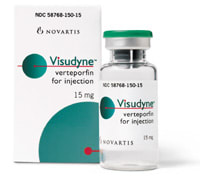Practice Watch
Tips and News You Can Use
Be Fair in Drawing Up Noncompete Clauses
Overly Restrictive Provisions Are Ending Up in Court.
Healthcare attorneys are seeing a dramatic increase in the number of challenges to noncompete provisions. A recent West Virginia case involved an interesting -- though ultimately unsuccessful -- challenge to a noncompete provision on the grounds that the geographical scope of the noncompete covenant was too broad.
The plaintiff, an ophthalmologist who had left his former employer and initiated a competing practice, contended that the noncompete provision was unenforceable because the prohibition extended 51 miles in every direction from each branch office of the multisite ophthalmic practice that had been his previous employer.

"This case demonstrates the need to be more careful in drafting noncompete provisions to avoid this kind of issue, which was litigated -- no doubt at great cost -- at both the trial and appellate court levels," says William A. Sarraille, a partner in the Arent Fox law firm in Washington, D.C.
Without filing a declaratory judgment action to determine the enforceability of the noncompete provision, the employee established a competing practice within 2 miles of the main office of his former employer. The trial court found that the noncompete provision was too broad because, once all the branch offices were considered, the noncompete area actually extended as far as 120 miles in one direction.
But the appellate court reversed the trial court, concluding that the noncompete provision was reasonable in its geographic scope. In announcing its decision, the appellate court noted that the employer drew significant numbers of patients from the areas around each branch office.
It also emphasized the employee's failure to seek a judicial determination before opening the competing office, and the proximity of that office to the employer's main location.
"Despite this ruling, the potential for 'branch office' clauses to make a geographic prohibition overly broad remains real and something that employers should carefully consider in drafting agreements," cautions Sarraille. "The result in this case could have been different if the employer had fewer patients in the branch office locations and the employee had established his practice at a greater distance from the employer's main office."
What You Say -- and What Your Patients Hear
Avoid These Common Communication Blunders.

You probably haven't had your communication skills critiqued in a long time -- if ever. However, Bob Levoy, O.D., of Roslyn, N.Y., writing in our sister publication, Optometric Management, asserts that doctors can do a much better job of communicating with patients by following a few common-sense rules. At the request of several readers, we're summarizing Dr. Levoy's key points here:
Don't be too technical in explaining your diagnosis and treatment recommendations to patients. Remember, you're not talking to professional colleagues. Patients are often understandably apprehensive and confused when they're receiving news about their health from a doctor. They're looking for simple, straightforward answers. But rather than appear foolish or dumb, patients will often just nod their heads and pretend to understand your technical explanations of their condition.

Don't ask a patient: "Do you understand what I'm telling you?" Rather, ask: "Does the way I'm explaining this make sense to you?" By phrasing the question the second way, you're giving the patient an opportunity to request a simpler explanation.
If a patient asks you to clarify something you feel that you've already explained, don't show signs of exasperation, such as taking a deep breath, sighing or talking down to the patient.
Don't act like your rushed. You may be explaining a basic glaucoma treatment for the 500th time, but if you talk fast and act like you're pressed for time, the patient won't be able to follow what you're saying. Not only that, you'll make the patient uncomfortable and he'll say he understands even though he doesn't.
Don't talk too much. Provide the patient with the information he actually needs. Patient education is fine, but a 10-minute dissertation on the etiology of dry eye may be far more than the patient wants or needs to know. Suggestion: Have pamphlets and videos available that patients can take home to learn more about their conditions.
You may believe that you're doing a superb job of communicating, but it's how your patients perceive you that's really important.
Three Practices Earn ASOA "Pinnacle" Award
They Excel in Medicare Billing Accuracy.
The American Society of Ophthalmic Administrators (ASOA) has named three practices as winners of its first annual William E. Rose Jr. Pinnacle Award for excellence in Medicare billing.
The award honors practices that have developed comprehensive internal audit programs to minimize billing mistakes and reduce the chances of fraudulent or abusive Medicare billing.
The award is named after William E. Rose Jr., the founder of Rose and Associates of Duncanville, Texas, which pioneered in the field of ophthalmic billing and coding consulting. Rose often gave presentations emphasizing accuracy and honesty in billing.
Winners were named in the following three categories:
Solo physician. Young Eye Institute, Lawton, Okla.; Stephen Gilkeson, practice administrator; Joseph A. Young, M.D.
Two to four physicians. Practice of Drs. Fine, Hoffman and Packer, Eugene, Ore.; Laurie Brown, administrator; I. Howard Fine, M.D., Richard S. Hoffman, M.D., Mark Packer, M.D.
Five or more physicians. Casey Eye Institute, Oregon Health and Science University, Portland, Ore.; Elizabeth Cottle, administrator; 25 physicians practicing general ophthalmology and various subspecialties.
Practices were chosen based on their exemplary billing practices, compliance with government regulations, continuous training of billing staff, and development of open lines of communication, so that any billing errors can be identified and immediately corrected.
IN THE NEWS
New Visudyne trial. QLT Inc. and Novartis Ophthalmics have begun a new Phase III study that will enroll 360 occult AMD patients to determine the effectiveness of verteporfin for injection (Visudyne) with individuals who have small lesions (less than four disc areas) or worse than 20/50 best-corrected vision. In the previous Phase III study for occult AMD, called the VIP trial, those two patient groups showed a significant benefit from Visudyne therapy after 1 year. Data from the new study is expected to be available by mid-2004.

The Centers for Medicare & Medicaid Services recently determined that data from the VIP trial wasn't convincing enough to approve Visudyne as a Medicare-covered therapy for occult AMD. Results from this new Phase III study will also be used to support an FDA application for the occult indication.
Efforts to improve the effectiveness of Visudyne are also ongoing in three separate clinical trials. In one study, Visudyne treatments are being spaced every 6 weeks instead of the usual timetable of every 3 months. In a second trial, reduced light intensity is being used for the photodynamic part of the treatment. And in a third study, the light treatment is being delayed an extra 15 minutes for patients with occult AMD.
"Each of these trials was begun because of scientific evidence that a change in the treatment regimen could enhance the effectiveness of Visudyne," says Mohammad Azab, M.D., senior vice president of clinical research at QLT.
Nurse anesthetists. Minnesota recently became the fourth state to eliminate physician supervision for nurse anesthetists. Minnesota joins Iowa, Nebraska and Idaho in choosing to "opt out" of the federal physician supervision requirement. A 2001 ruling by the Centers for Medicare & Medicaid Services allows individual states to opt out after consulting with the state medical and nursing boards and determining that opting out is consistent with state law and in the interests of the state's citizens. The states that have chosen to opt out of the physician supervision requirement have numerous rural hospitals, where nurse anesthetists are usually the sole anesthesia providers.
Trial delayed. Eli Lilly and Co. has delayed by 4 to 6 months a key Phase III clinical trial for a new drug for treating ocular complications of diabetes, including macular edema and diabetic retinopathy. A Lilly spokesperson said the delay is due to creating the criteria for the trial and not the result of safety or efficacy issues. The drug, known by the code LY333531, targets a family of proteins that plays a role in sending signals between cells.
Optometrists rebuffed. The Georgia legislature recently turned thumbs down on three optometry-sponsored bills that would have expanded optometry's reach into the practice of medicine. Two of the bills would have expanded optometrists' right to prescribe medications and the other would have mandated comprehensive eye exams for all pre-kindergarten children. The American Academy of Ophthalmology and the Georgia Society of Ophthalmology opposed all of the bills.
B&L turnaround. Ending a string of disappointing results, Bausch & Lomb reported 3% overall revenue growth in the first quarter of the year and said it was on track to meet analysts' earnings estimates for 2002 in the $1.62-1.65 range. fortheremainder of the year. B&L said it's now seeing growth in its contact lens, contact lens care and pharmaceutical businesses, helped by strong sales of new products. Bausch & Lomb also cut its quarterly cash dividend in half to conserve cash.
Xalatan sales. Pharmacia Corporation reported that worldwide sales of its glaucoma medication Xalatan were $220 million in the first 3 months of 2002, an increase of 10% over the previous year. U.S. sales of Xalatan rose more than 8% compared to the same period last year.
Alphagan revenue. Allergan said worldwide sales of its Alphagan product line of glaucoma medications rose to $74.8 million in the first quarter of this year, representing a year-over-year increase of 12.5%.
Appointed. Ocular Sciences has named Gary Paladin to the new position of president of global marketing. Paladin, who has 16 years of marketing experience within the healthcare and consumer products industry, will focus on developing the contact lens maker's strategic marketing initiatives on a worldwide basis.
Retired. Jacques Stoerr, the longtime leader of Essilor of America, has retired as chairman of the company. Stoerr, whose tenure with the company has spanned more than 35 years, will continue as an adviser on VisionWeb and other Essilor projects.
Awareness campaign. Vistakon has launched a campaign to educate Hispanic-Americans on the importance of vision care, a health issue that's often neglected by this community because of the lack of Spanish-language eye health information. As part of the campaign, a network of Spanish-speaking eyecare professionals has been formed to provide information at the community level. Vistakon is also launching a Spanish-language eyecare Web site and will sponsor Hispanic festivals in Miami, Los Angeles and New York. Hispanics age 40 and older are at high risk for developing glaucoma and diabetic retinopathy.
Grant received. Lighthouse International has received a $150,000 grant from the AARP Andrus Foundation to develop and implement an eyecare awareness campaign for older Americans. The campaign, called "The Aging Eye and You," will focus on promoting the quality of life among older people at risk for - or who already have - chronic vision impairment.
UltraVac. STAAR Surgical has introduced UltraVac V1 coiled tubing designed to improve the efficiency and safety of venturi-type phaco systems manufactured by Bausch & Lomb. Combined with a proprietary phaco cassette, the new tubing allows the surgeon to increase vacuum during surgery while achieving anterior chamber stability.
Acquisition. Vision Pharmaceuticals, which markets Viva-Drops for dry eye through ophthalmologists, optometrists and retail outlets, has been acquired by Corneal Sciences Corp., a privately owned pharmaceuticals company.
REFRACTIVE SURGERY UPDATE
Custom ablation PMA accepted. The FDA has accepted Alcon's Pre-Market Approval Application for the company's custom wavefront-guided laser eye surgery, marking the first FDA acceptance of a filing for custom laser surgery. The acceptance is based on the performance in clinical trials of Alcon's LadarWave wavefront measurement device and LadarVision 4000 excimer laser.
Merger completed. TLC Laser Eye Centers and Laser Vision Centers, Inc., have officially combined operations. The new company, known as TLC Vision, is being led by Elias Vamvakas, former chairman and CEO of TLC Laser Eye Centers.
LCA-Vision rebounds. LCA-Vision, a provider of laser vision correction services, returned to profitability in the March quarter, earning $1.1 million, or three cents a share. The company reported that average price per procedure rose to $1,066 in the March quarter, compared to $897 a year ago. The company has achieved price increases in five consecutive quarters.
Online information. The Web site www.lasikinstitute.org, which provides the public with educational information about refractive surgery, has recently been expanded. Additions include a primer on the various refractive conditions and a post-surgical information section to assist individuals who've recently had surgery.
CK study. A 1-year study of 54 eyes that had undergone conductive keratoplasty for low-to-moderate hyperopia showed that in terms of safety, effectiveness and stability, the procedure produced results "as good or better" than those achieved by LASIK or laser thermal keratoplasty. Conductive keratoplasty uses a low-energy, high-frequency current applied directly into treatment spots in the peripheral corneal stroma.








